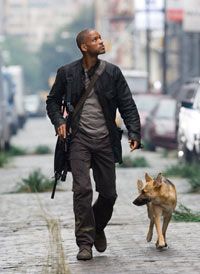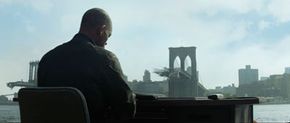Imagine the bustling chaos of New York City suddenly quiet, still and devoid of life -- save for a solitary man and his canine companion, walking down a desolate, overgrown Fifth Avenue. That unsettling vision sets the scene for the postapocalyptic future of "I Am Legend," in which a mutated virus originally developed to cure cancer has wiped out the planet. Dr. Robert Neville (Will Smith) is the last man standing, a virologist who searches for a cure by day and barricades himself against roving bands of infected, bloodthirsty zombies by night.
"I Am Legend" is based on a 1954 novel of the same name by Richard Matheson. It was adapted in 1964 as "The Last Man Standing" with Vincent Price and again in 1971 as "The Omega Man," starring Charlton Heston. This latest incarnation was a monumental logistical and technical challenge for the filmmakers and a psychological one for Smith, who single-handedly carries the film.
Advertisement
In this article, we'll outline the process of bringing this $150 million-plus movie to the screen and hear firsthand from Smith, director Francis Lawrence and co-screenwriter Akiva Goldsman.
The third remake of "I Am Legend" hit many roadblocks on the way to the multiplex. Arnold Schwarzenegger and Ridley Scott were about to shoot it in 1997 when Warner Bros. balked at the $108 million budget. Tom Cruise, Michael Douglas and directors James Cameron and Guillermo del Toro were variously interested or attached, and Will Smith and Michael Bay nearly made an R-rated version in 2002, but the similarly themed "28 Days Later" stole that thunder.
Three years later, Akiva Goldsman and Francis Lawrence, who worked together on "Constantine," revisited the idea as character-driven, PG-rated survival story and got a green light from Warner Bros. Once Smith came aboard, they refined the concept, incorporating some elements from previous screenwriter Mark Protosevich.
"That started in February 2005, and we started officially prepping in May 2006," says director Francis Lawrence. "We shot from September till the beginning of April. We were under-budget in production and we finished a couple days early." That seems almost miraculous in terms of what was required to make it happen. Next, we'll learn about the enormous undertaking of shooting on the "deserted" streets of Manhattan.
Advertisement


